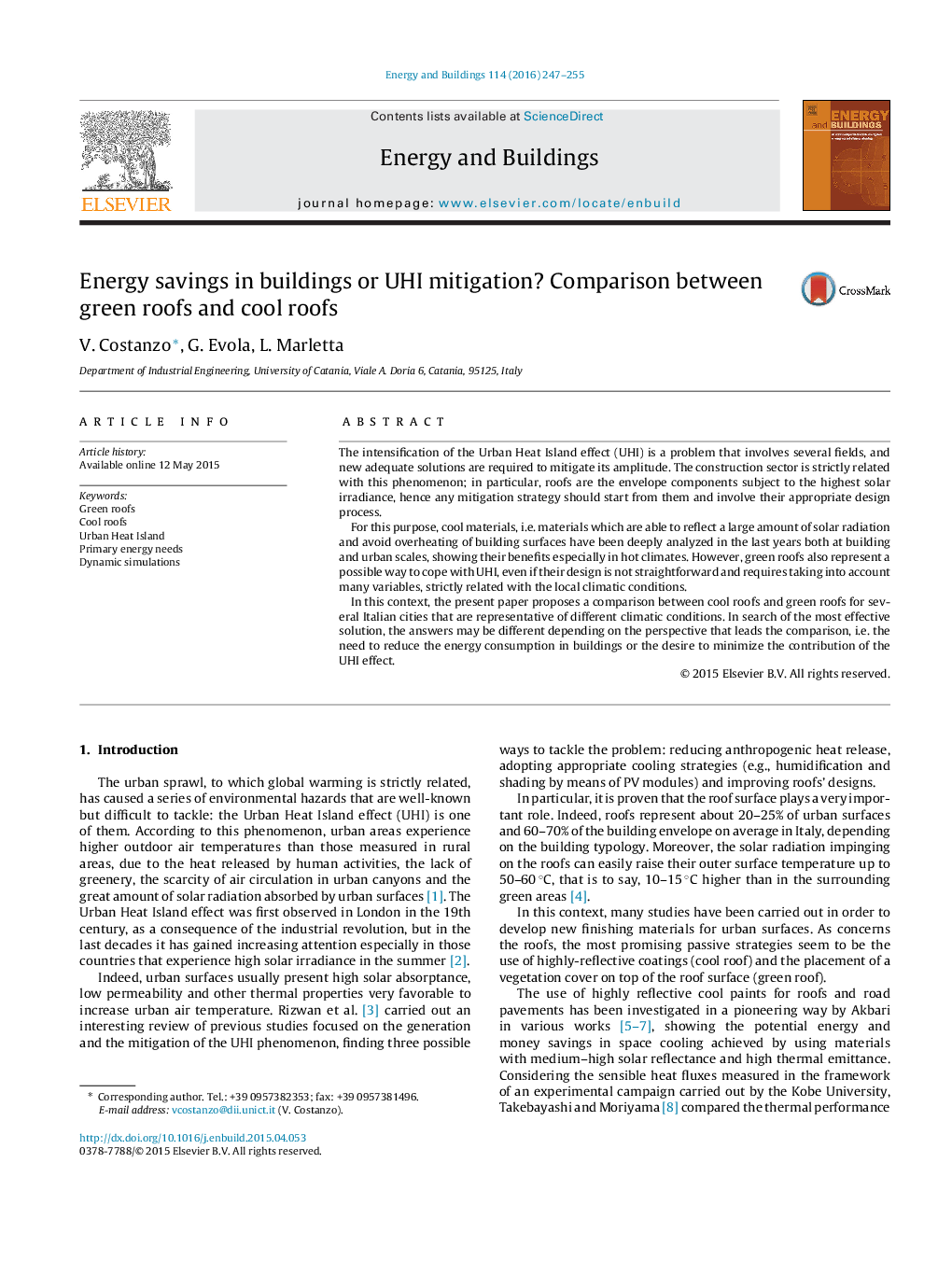| Article ID | Journal | Published Year | Pages | File Type |
|---|---|---|---|---|
| 262140 | Energy and Buildings | 2016 | 9 Pages |
•UHI can be mitigated by both cool (CR) and green roofs (GR).•The outer roof temperature may decrease up to 25 °C with CR and up to 20 °C with GR.•Strong reductions in the released heat fluxes (40% up to 75%) are also expected.•Anyway, depending on the air-conditioning system, Primary Energy needs may increase.•On the whole, the choice between CR and GR should be very attentive.
The intensification of the Urban Heat Island effect (UHI) is a problem that involves several fields, and new adequate solutions are required to mitigate its amplitude. The construction sector is strictly related with this phenomenon; in particular, roofs are the envelope components subject to the highest solar irradiance, hence any mitigation strategy should start from them and involve their appropriate design process.For this purpose, cool materials, i.e. materials which are able to reflect a large amount of solar radiation and avoid overheating of building surfaces have been deeply analyzed in the last years both at building and urban scales, showing their benefits especially in hot climates. However, green roofs also represent a possible way to cope with UHI, even if their design is not straightforward and requires taking into account many variables, strictly related with the local climatic conditions.In this context, the present paper proposes a comparison between cool roofs and green roofs for several Italian cities that are representative of different climatic conditions. In search of the most effective solution, the answers may be different depending on the perspective that leads the comparison, i.e. the need to reduce the energy consumption in buildings or the desire to minimize the contribution of the UHI effect.
